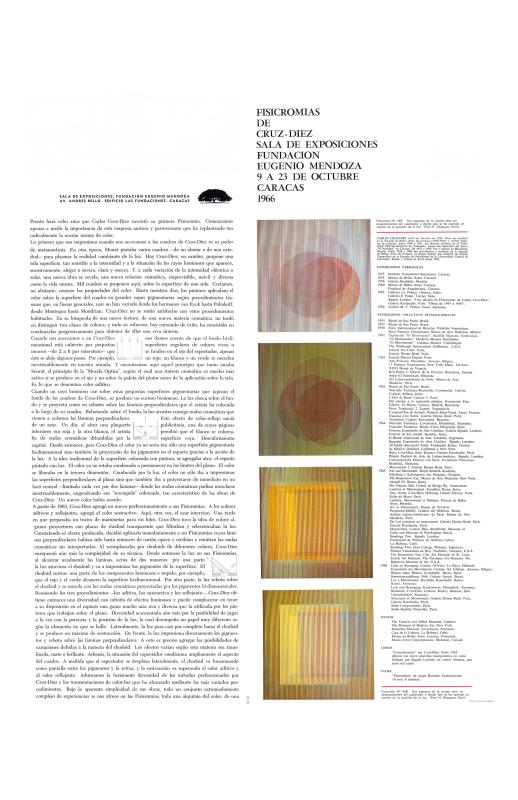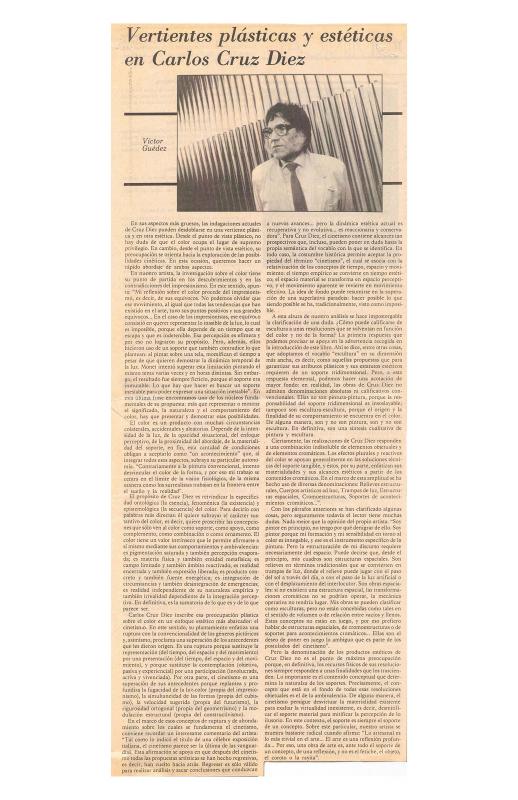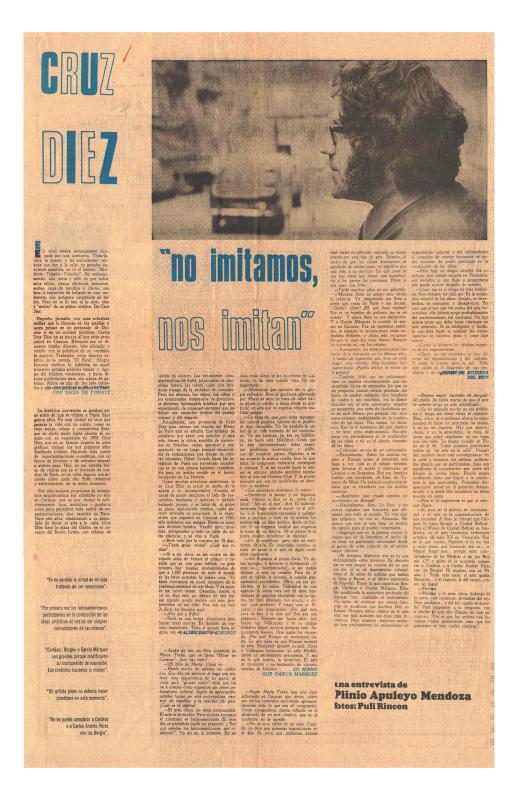The following editorial note appeared at the beginning of the document in the Spanish version in the daily national newspaper El Nacional. It read as follows: “On the 24th of June [1970] at the inauguration of the thirty-fifth International Venice Art Biennale, Venezuela was represented by the visual arts works of Carlos Cruz-Diez. His participation was organized by the INCIBA. The catalogue contains a broad study by Frank Popper, one of the major personalities of great international authority in the critique of the visual arts. The version we are now offering is the textual translation of Popper’s text by Gabriel Marcos.”
This essay exhibits a scholarly quality and was written by the English historian of Czech descent Frank Popper (b. 1918), who was a trained and sagacious researcher with a thorough knowledge of art and technology, as well as a scholar of Kinetic art and the virtual arts, and in what is known today as techno-aesthetics. Popper imparts fundamental information, along with interpretation and analysis in a precise and systematic way. Popper studied all the work in the series produced by Cruz-Diez along the line of his hypothesis, at times providing brief clues and key information about Kinetic art in general. For example, he affirms that a “researcher” such as Cruz-Diez would testify that the future of Kinetic art would end at its conception: in relation to the problems between the physical and the visual, the optical and the “real, the sensory, and the conceptual.” He does the same thing in general with regard to contemporary art, wondering if it may be possible that Cruz-Diez has resolved one of the most discussed problems today: the apparent paradox between the imposed effects created by the artist and the aesthetics effects created by public activity. The original title of the text was “Cruz-Diez: l’événement-couleur” [Cruz-Diez: The Event of Color (April 1970, Paris)]. In the third line of the Spanish version there is the following misprint: where it says “it can’t be understood” should say “it can only be understood,” a mistake that completely changes the meaning of the sentence.
[For other texts referring to the work by Cruz-Diez, see in the ICAA digital archive the essay byJean Clay(untitled) “[Pronto hará ocho años que Carlos Cruz-Diez...] = [Voici bientôt huit ans que Carlos Cruz-Díez…]” (doc. no. 858602); the article by Víctor Guédez “Vertientes plásticas y estéticas en Carlos Cruz-Diez” (doc. no. 857000); and the interview by Plinio Apuleyo Mendoza “Entrevista a Cruz Diez [No imitamos, nos imitan]” (doc. no. 862938)].



